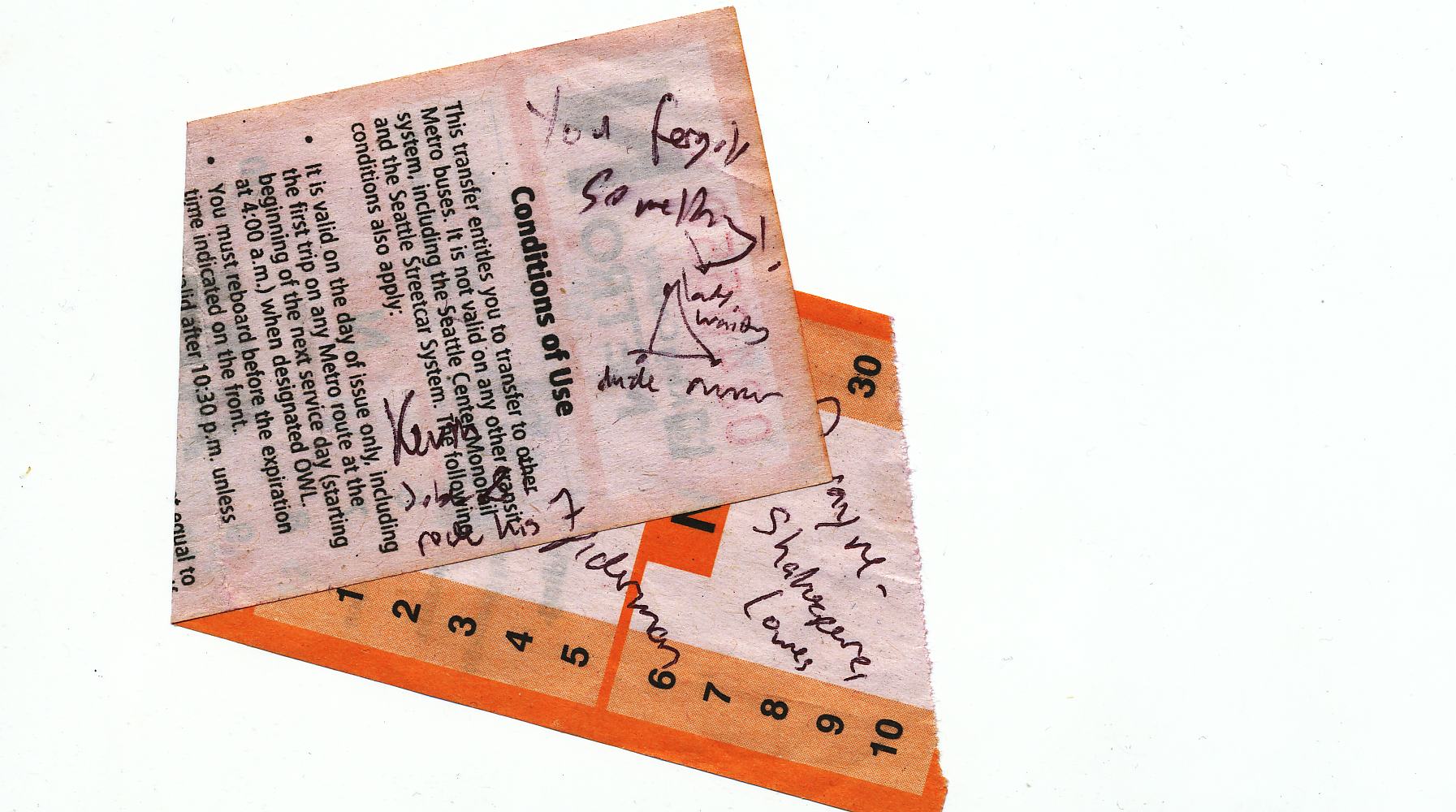My notes are simply a diagram of a triangle with labels at each point for the three people who made it all happen. Race doesn’t play a major role in the interaction, which was brief, but in the interest of countering stereotypes I’ll specify them anyway.
A Caucasian man in casual business wear steps off my bus at southbound Third and Union, outside Benaroya Hall. It’s commuting hour, fairly crowded, and he is intent on his destination. He drops something–a light wallet if I saw correctly, the clip of cards and bills people sometimes carry in favor of the thicker leather enclosure. A thirty-something dark-skinned woman of indeterminate background, also attired in office dress, is leaning on the standing benches and gestures at the fallen wallet. She says, “you forgot something!”
The man doesn’t notice this, but a slightly younger African-American man does, his alert gaze moving from her hand to the wallet, and over to its owner. He says, “hey!” as he leans down, retrieving it and catching his attention. The commuting businessman turns and gathers what has happened. He smiles and cocks his head at the younger man, by way of sincere thanks, receiving the offered wallet. They exchange a couple of words I can’t hear. All three make eye contact with each other, raised eyebrows and grins, sharing the light laughter of thankful relief.
It was over in seconds, but it was beautiful.
Nathan Vass is an artist, filmmaker, photographer, and author by day, and a Metro bus driver by night, where his community-building work has been showcased on TED, NPR, The Seattle Times, KING 5 and landed him a spot on Seattle Magazine’s 2018 list of the 35 Most Influential People in Seattle. He has shown in over forty photography shows is also the director of nine films, six of which have shown at festivals, and one of which premiered at Henry Art Gallery. His book, The Lines That Make Us, is a Seattle bestseller and 2019 WA State Book Awards finalist.


